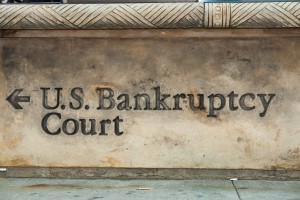By Ryan C. Wood
First, what a creditor can do usually does depends upon the chapter of the bankruptcy code you choose to file under. This article will only address some of the things a creditors can do under chapter 7 and chapter 13 of the bankruptcy code. Generally speaking most unsecured creditors to not participate in the average bankruptcy case unless there are allegations of fraud or improper conduct by debtor regarding the extension of credit or the use of the credit account by the debtor. Secured creditors usually do participate in most bankruptcy cases given the person filing for bankruptcy protection has possession of the collateral securing repayment of the loan or debt. Another class of creditors, creditors with unsecured priority claims, may participate depending upon the chapter that is filed.
What if there is an allegation of fraud or some improper conduct?
Once a chapter 7 or chapter 13 case is filed a notice of the bankruptcy case, meeting of the creditors and deadlines is served by the bankruptcy court all on creditors listed in the bankruptcy petition. This notice has a number of dates and deadlines listed on it. One of the most important deadlines is the date to object to the debtor’s discharge or to challenge the dischargeability of specific debts. Under Section 727 of the bankruptcy code a party in interest may object to the debtor receiving a discharge in the bankruptcy case. Under Section 523 a creditor may try and prove that the debt owed to them specifically should not be discharged. This deadline is 60 days after the date of the first schedule meeting of the creditors. The meeting of the creditors is usually held approximately 30 days after the bankruptcy petition is filed. That means there is about 90 days for a creditor or party in interest to conduct an investigation regarding the bankruptcy filer’s income, expenses and assets if there is an allegation of fraud or improper conduct. In the 9th Circuit the 60 day deadline is a hard deadline. If a creditor or party in interest does not file their adversary complaint within that deadline it will most likely be dismissed as late filed. An extension of the deadline to file an adversary proceeding can be requested and granted by the court for cause, but do not expect the deadline to be extended if you have done nothing in the case and waited until the last minute to participate in the bankruptcy case. It is not fair to the debtor for the 60 day deadline to be extended because a creditor’s bankruptcy lawyer or party in interest was lazy, incompetent or negligent in investigating the financial condition of the debtor timely. The Supreme Court of the United States has made it clear that a debtor is entitled to the expeditious handling of all matters regarding discharge. See Taylor v. Freeland & Kronz, 503 U.S. 638, 112 S.Ct. 1644, 118 L.Ed.2d 280 (1992).
The first opportunity to ask questions by a creditor is at the 341 meeting of the creditors
The first opportunity to cause a problem is at the meeting of the creditors. It really is not causing a problem because that is what the meeting of the creditors is for, for creditors to come ask questions and determine if there are any issues to raise or allege the debtor is not entitled to a discharge of their debts, or the debt specifically owed to the creditor for some reason. The meeting of the creditors is a limited forum to ask questions though. In both chapter 7 or chapter 13 cases a creditor will only be given around 5 minutes or less to ask question of the debtor. There are many cases on the calendar and trustees have to keep the calendar moving to a certain extent. If the questions asked by a creditor or their attorney truly raise issues the trustee is interested in the questioning may take longer and the trustee may jump in to question the debtor more too. If a creditor wants to continue their investigation they will need to file an application for a Rule 2004 examination of the debtor.
Rule 2004 Examinations
A rule 2004 examination refers to the section of the bankruptcy code that allows for a party in interest and/or creditor to depose the debtor and request documents. A rule 2004 examination is a very powerful tool because it has a broad scope of what can be requested of the debtor. A rule 2004 has been described as a “fishing expedition” given the broad nature. The scope of the examination may encompass “the acts, conduct, or property or to the liabilities and financial condition of the debtor, or to any matter which may affect the administration of the debtor’s estate, or the debtors right to a discharge period.” See Rule 2004(b). The extent of the inquiry under Rule 2004 is intended to be very broad and permits the party invoking it great latitude of inquiry. See In re Valley Forge Plaza Assoc., 109 B.R. 669, 674 (Bankr. E.D. Pa. 1990). Furthermore, examinations under rule 2004 are allowed for the purpose of discovering assets and unearthing funds.” See 8 Collier on Bankruptcy, 2004.4, 2004-10 (15th ed. 1993).
The actual filing of an adversary complaint under Section 523 or Section 727 of the Bankruptcy Code
A creditor or party in interest may skip attending the 341 meeting of the creditors or conduct as rule 2004 examination of the debtor altogether. I a creditor or party in interest has all the cause or evidence they feel they need to initiate a lawsuit that may do just that. The standard to survive the complaint being dismissed is not a strict standard. To survive a motion to dismiss for failure to state a claim upon which relief can be granted, a complaint must contain sufficient factual matter, accepted as true, to state a claim to relief that is plausible on its face. See Ashcroft v. Iqbal, 556 U.S. 662, 679 (2009). Once the complaint is filed a creditor or party in interest will begin the discover process and try and obtain additional damaging documents or information through the discovery process in the adversary proceeding. Whether a creditor or party in interest is successful in taking away a debtor’s discharge entirely or having a specific debt deemed not discharged depends upon many factors and ultimately a favorable ruling by a bankruptcy judge. The goal when filing bankruptcy is to have an issue free case that results in the relief initially sought, an order of discharge signed by the bankruptcy court.




